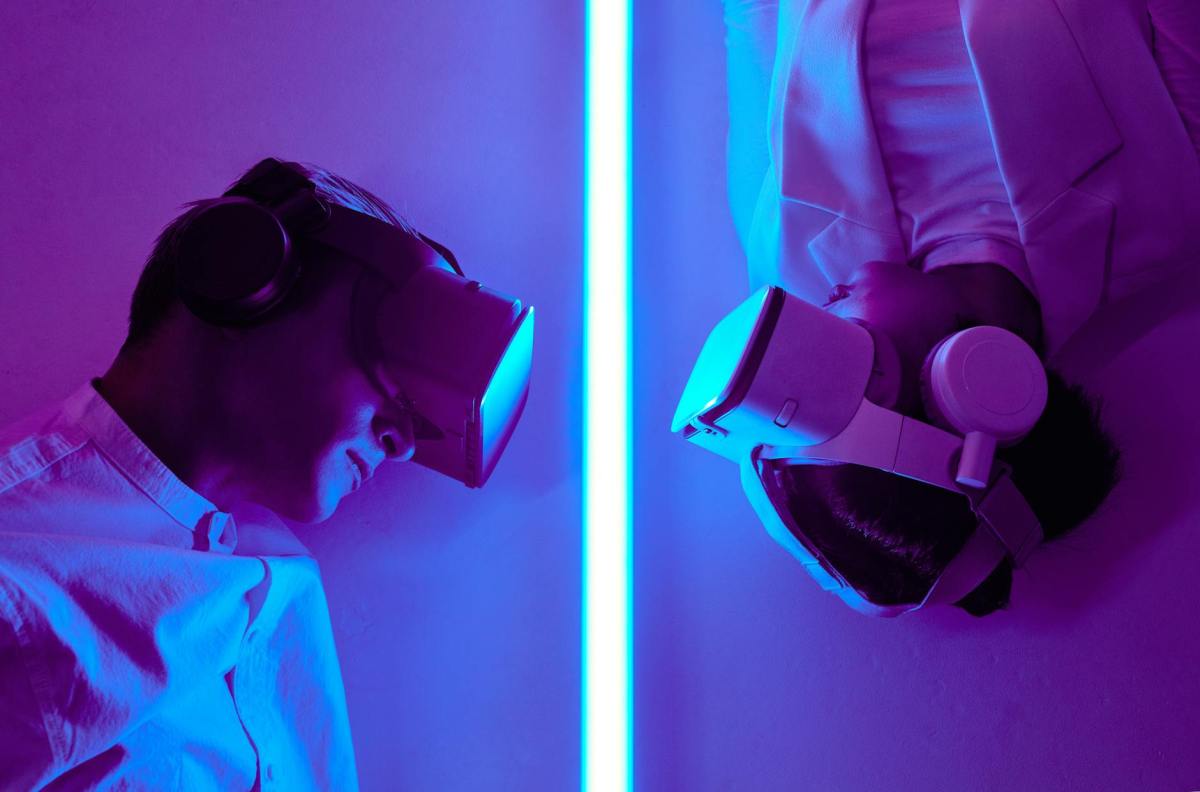Before analyzing some of the practical applications of augmented reality technology, let’s take a look at what it is and its origin and history.
What is augmented reality?
Augmented Reality (or AR) is a technology that offers interactive experiences by combining a physical and a virtual space.
A technology that can change the real world through different digital details by superimposing diverse environments.
Digital development that merges the real world with graphic content displayed in physical environments with the implementation of technological resources.
Pokemon GO is an example of what augmented reality is by conjugating the physical world with the virtual one.
But what is the historical origin of this augmented reality technology?
Origin and history of augmented reality
As with the term robot, the origin of augmented reality as a concept can also be found in literature: specifically in 1901 in a novel by Lyman Frank Baum, who is also known as the author of The Wonderful Wizard of Oz and its subsequent saga.
In The master key, the author imagined electronic glasses in which additional information about the people you were looking at could be displayed.
To find the first technological application we come to 1957, when the inventor and cinematographer Morton Heilig proposed a multisensory user experience with visual elements.
Almost two decades later, in 1973, computer artist Myron W. Krueger designed the first augmented reality installation, mixing video cameras with a projection system that created an interactive environment that responded to users’ movements by means of movements and shadows.
We have to go back to the early 1990s to find the first definition of augmented reality as such. Boeing engineer Tom Caudell coined this term to refer to the set of devices used by electricians in aircraft factories when carrying out complex wiring.
What are the practical applications of augmented reality?
Now that we know what augmented reality is and a brief historical overview of its origin, let’s take a look at some of the practical applications this technology can have in different sectors.
Education
Based on the premise that humans retain 10% of what we read or 20% of what we hear versus 90% of what we experience, it seems like a good idea to apply technologies that push in that direction.
Therefore, augmented reality applied to education helps to optimize learning efficiency with the following benefits:
- Better explanation in abstract subjects, especially in those complex issues represented in three-dimensional models.
- Fun. The extra entertainment that a gamified approach to education can generate is a source of motivation and engagement. This generates, therefore, a higher degree of attention.
- Self-discovery. Students will be able to interact on their own and discover and learn new things during visits to cultural institutions, museums, etc.
- Distance education can help reduce the digital divide.
- Reinforcement of theory. The fact of having this technology obviously does not eliminate the theoretical part of education, but it can be of great help in reinforcing these concepts thanks to much more tangible practical explanations with the support of these virtual practices.
Health
We could talk about numerous advantages of the application of augmented reality in the healthcare field, but perhaps with a concrete example it will be simpler.
Already in 2019, and thanks to the combination of augmented reality with 5G, it was possible to develop the first expert assistance system for operations based precisely on 5G technology.
Specifically, up to seven endoscopic digestive surgeries were performed in the Spanish city of Malaga remotely assisted from Japan, a milestone that was made possible thanks to 5G (and its low latency and high speed) and augmented reality.
Medical training can also benefit from augmented reality (along with other technologies) by helping to provide a real-time collaborative immersive experience also during a surgical procedure, as well as creating a knowledge base to take distance learning a step further.
Tourism
Among the applications that augmented reality offers to tourism are historical recreations of the past (such as medieval Segovia) or the enjoyment of notable events at any time of the year, such as Easter Week in Malaga.
As in other augmented reality applications, the combination of this technology with 5G makes it possible to enjoy a different and enriching experience for the user.
Another of the novel elements that augmented reality offers to tourism are the possibilities of gamification that help, through challenges or games, to discover in a more enjoyable or fun way curiosities of the places that are being visited, something that can sometimes be especially useful to make the visit entertaining for children.
Industry 4.0
In the industrial sector, augmented reality can be of great help in different industrial processes, often in conjunction with 5G technology, such as:
- Manufacturing, saving costs and time by being able to detect possible failures during development.
- Maintenance. Being able to carry out this task remotely also saves time as qualified personnel can attend to needs in different locations.
- Safety. Thanks to the visual support provided by the RA, workers can count on a higher degree of protection in case of emergencies.
- Logistics. In plants or buildings, especially in larger ones, augmented reality can be useful to help more quickly find the materials being searched for.
- Sales. Explanations of products with augmented reality technology can make them more visual and more attractive to customers.
Conclusion
Augmented reality helps to improve the user experience in different areas with the aggregation of virtual elements in real physical environments by installing applications on different devices such as mobiles, tablets or laptops.







